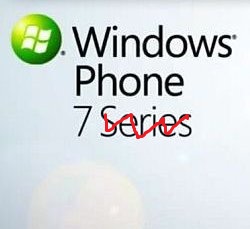
After a flurry of rumors, this week Microsoft confirmed that Microsoft Chief Experience Officer J Allard and President of Microsoft’s Entertainment & Devices Division Robbie Bach will be leaving the company this year. It was rumored that J Allard, known to many as the “father of the Xbox”, abruptly decided to resign from his post at the company after the Microsoft Courier tablet was erased from potential existence. This was immediately shot down by Allard himself in a letter to the company that mentions “no chairs were thrown” when he made the decision to leave. After working at Microsoft for nineteen years, he says that he’s now ready “to put some energy into [his] passion for design, the arts and philanthropy.” For the time being, however, Allard will remain with Microsoft as an “advisor” to CEO Steve Ballmer and he has no plans to jump ship to other tech companies like Google and Apple. Here’s an excerpt from Allard’s goodbye letter titled Decide. Change. Reinvent.; look after the break to read it in its entirety.
If you’ve been following along, you probably understand just how difficult it was for me to decide to leave the tribe and explore new territory, but the time has come. My passion for our cause combined with my obsessive nature has put many of my other interests on hold for a long time. I don’t know exactly what tomorrow looks like – but if my focus has been 95% MSFT, 5% life until now, I know that the first step is to flip that ratio around. After wrapping some projects up, I will shift to 95% life and 5% MSFT. With that 5% I’ll be working for SteveB on a couple of projects beginning this fall.
Robbie Bach, whose been with Microsoft for about 22 years, will leave the company outright this fall. Though he’s only 48, Bach is labeling his departure a “retirement” and he says that the decision to leave the company was his alone. “I’m at the time in my life where I want to dedicate more time to my family and my nonprofit work, including my work with the Boys & Girls Clubs of America.” Click here to read an informative TechFlash Q&A with Bach. Here’s an excerpt from company letter written by Ballmer concerning Bach’s departure; look after the break to read more.
After almost 22 years with the company, Robbie Bach has decided to retire from Microsoft. I have worked with Robbie during his entire tenure at Microsoft, and count him as both a friend and a great business partner and leader. Robbie has always had great timing, and is going out on a high note — this has been a phenomenal year for E&D overall, and with the coming launches of both Windows Phone 7 and “Project Natal,” the rest of the year looks stupendous as well. While we are announcing Robbie’s retirement today, he will remain here through the fall, ensuring we have a smooth transition.
So how does this shakeup affect Microsoft? With Allard and Bach out of the picture, this leaves Andy Lees, head of the mobile communications business, and Don Mattrick, head of the interactive entertainment business, reporting directly to Ballmer concering mobile and gaming initiatives. I will always remember when I was first introduced to J Allard when the original Xbox was announced back in 2001, and it was great to see Robbie Bach in person at Microsoft’s CES keynote this past year. Their experience and expertise will be noticably missed at Microsoft. I wish them the best of luck in their future endeavors.
[Via Engadget; Joystiq; ZDNet, here & here; MicrosoftBlog] Continue reading Microsoft shakeup: J Allard & Robbie Bach leave the company





















